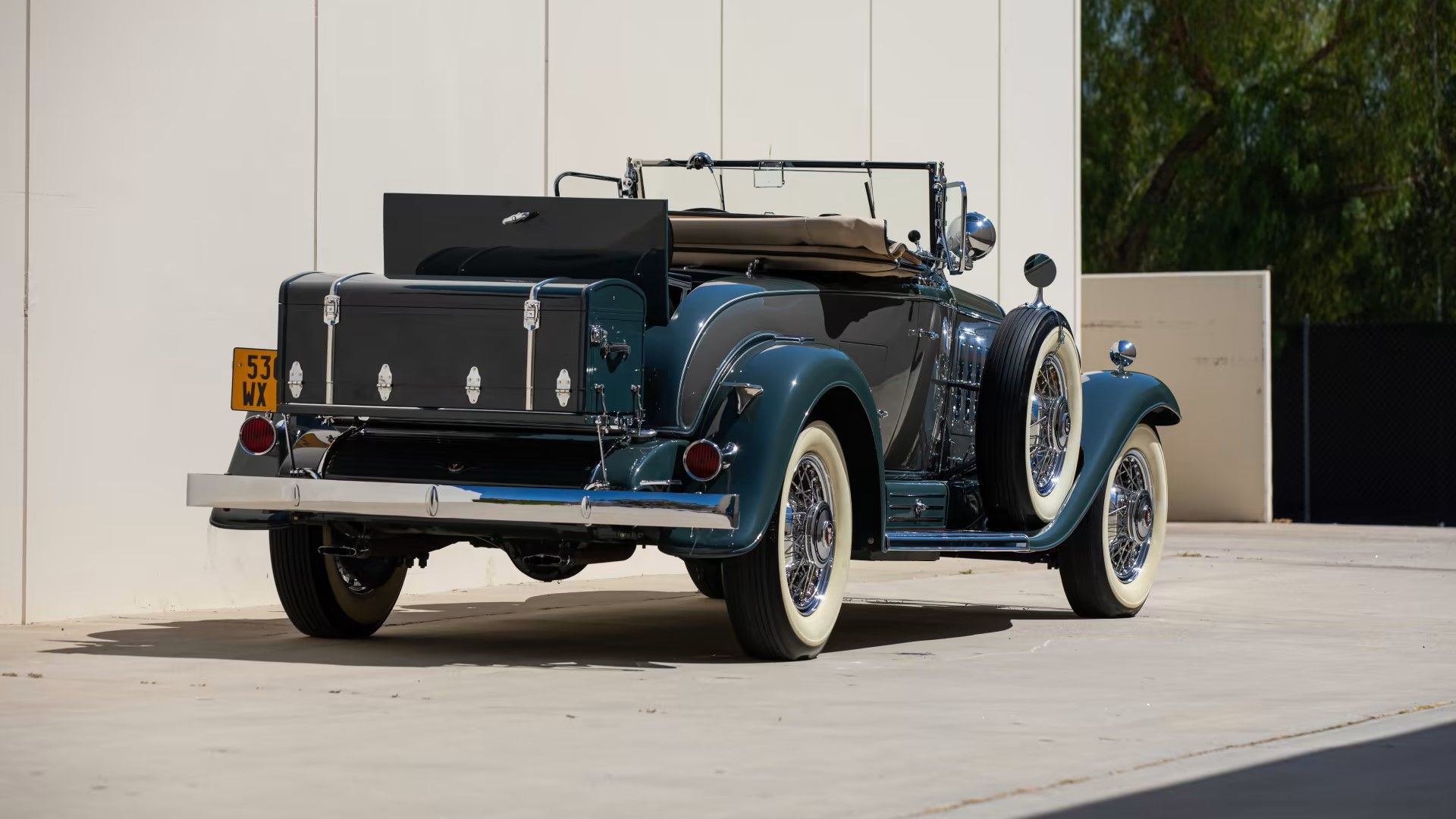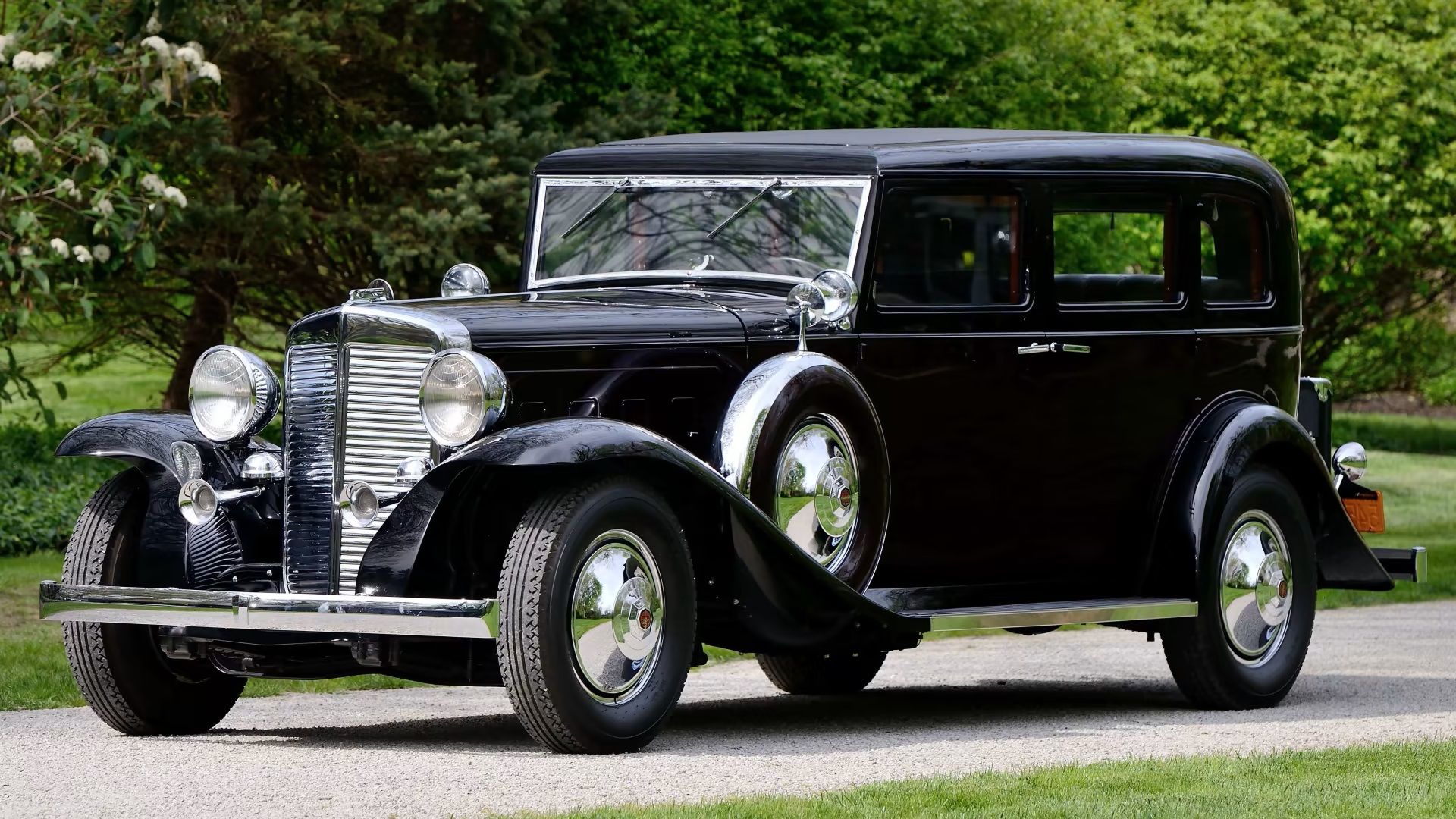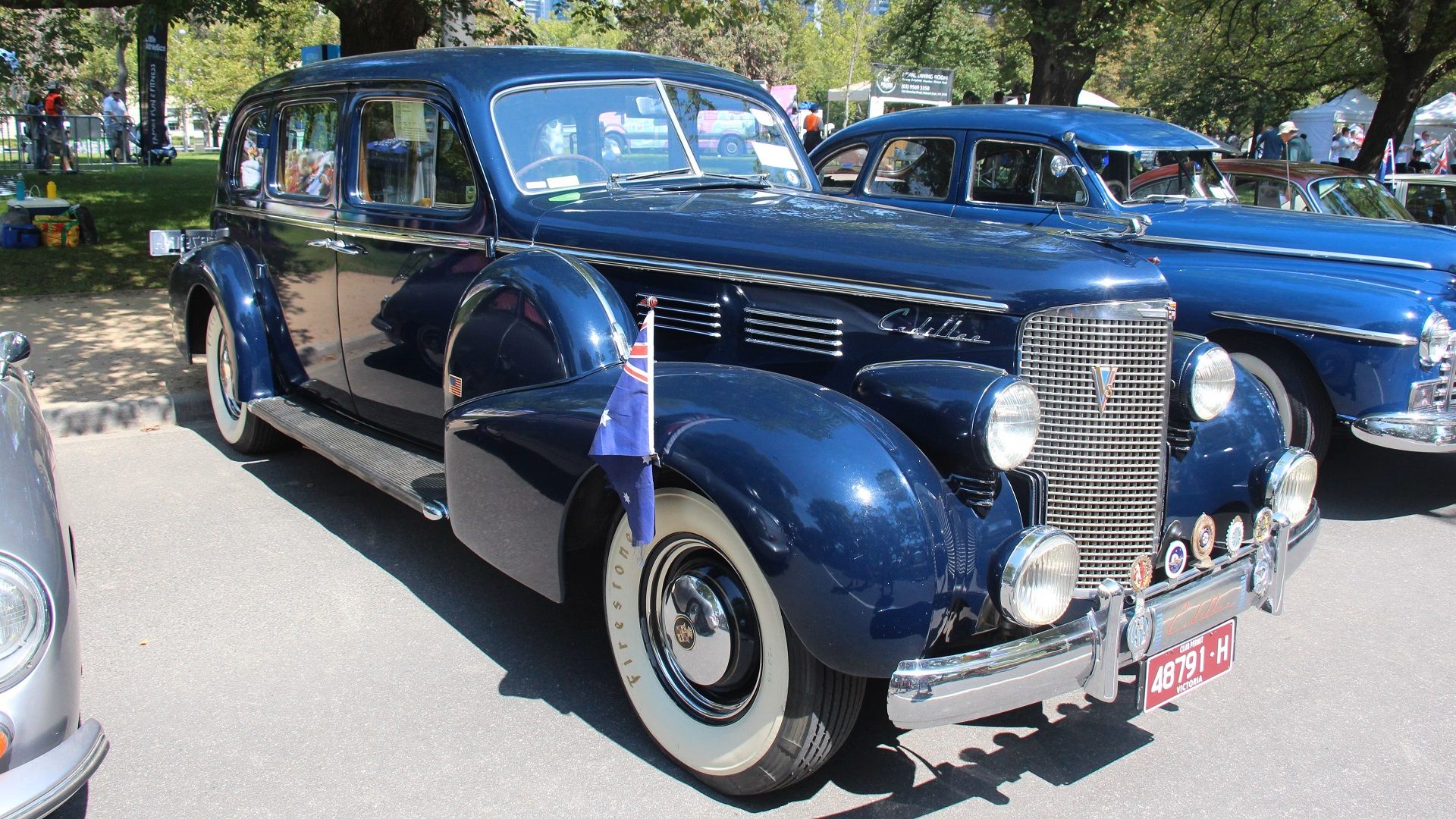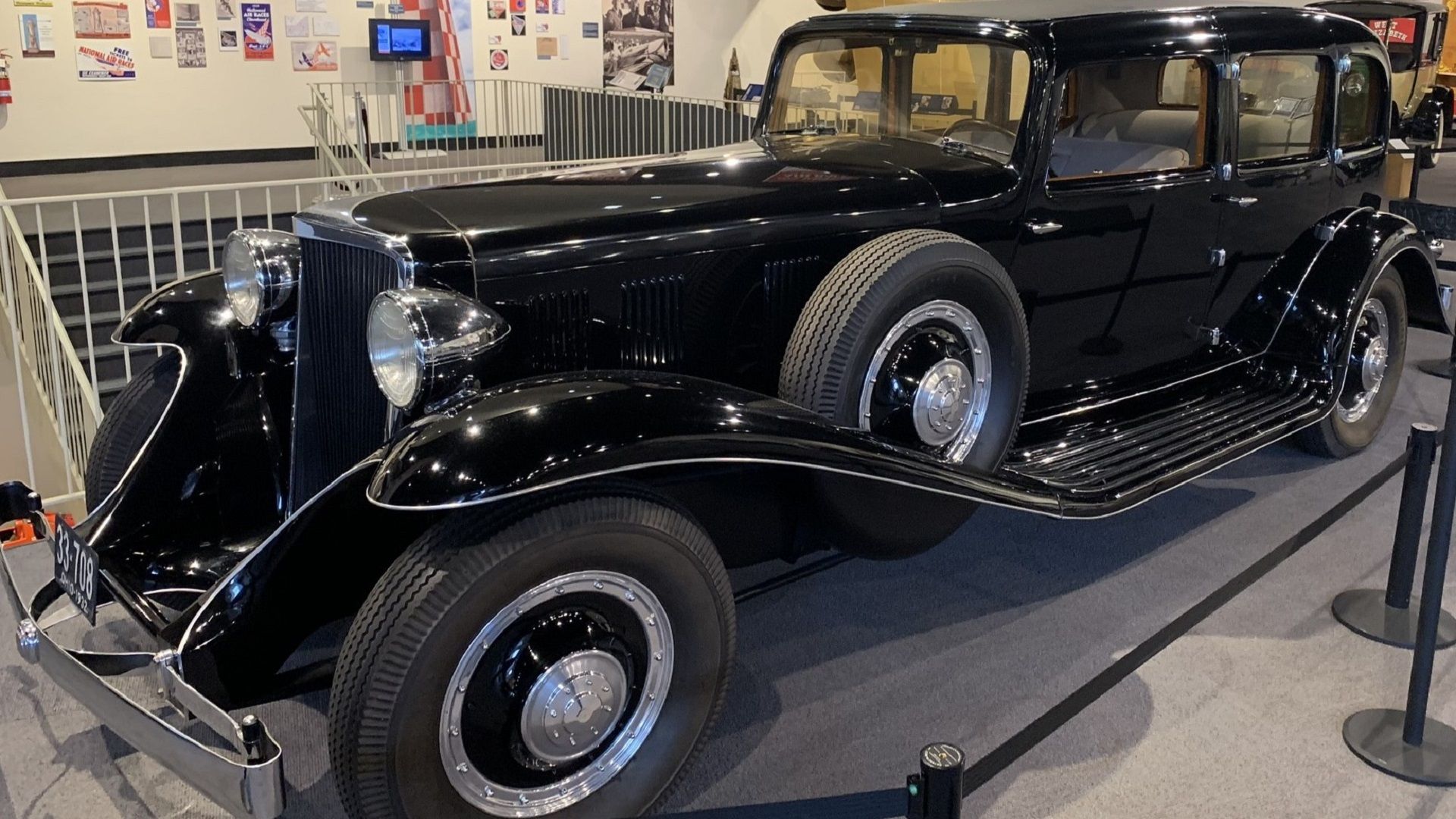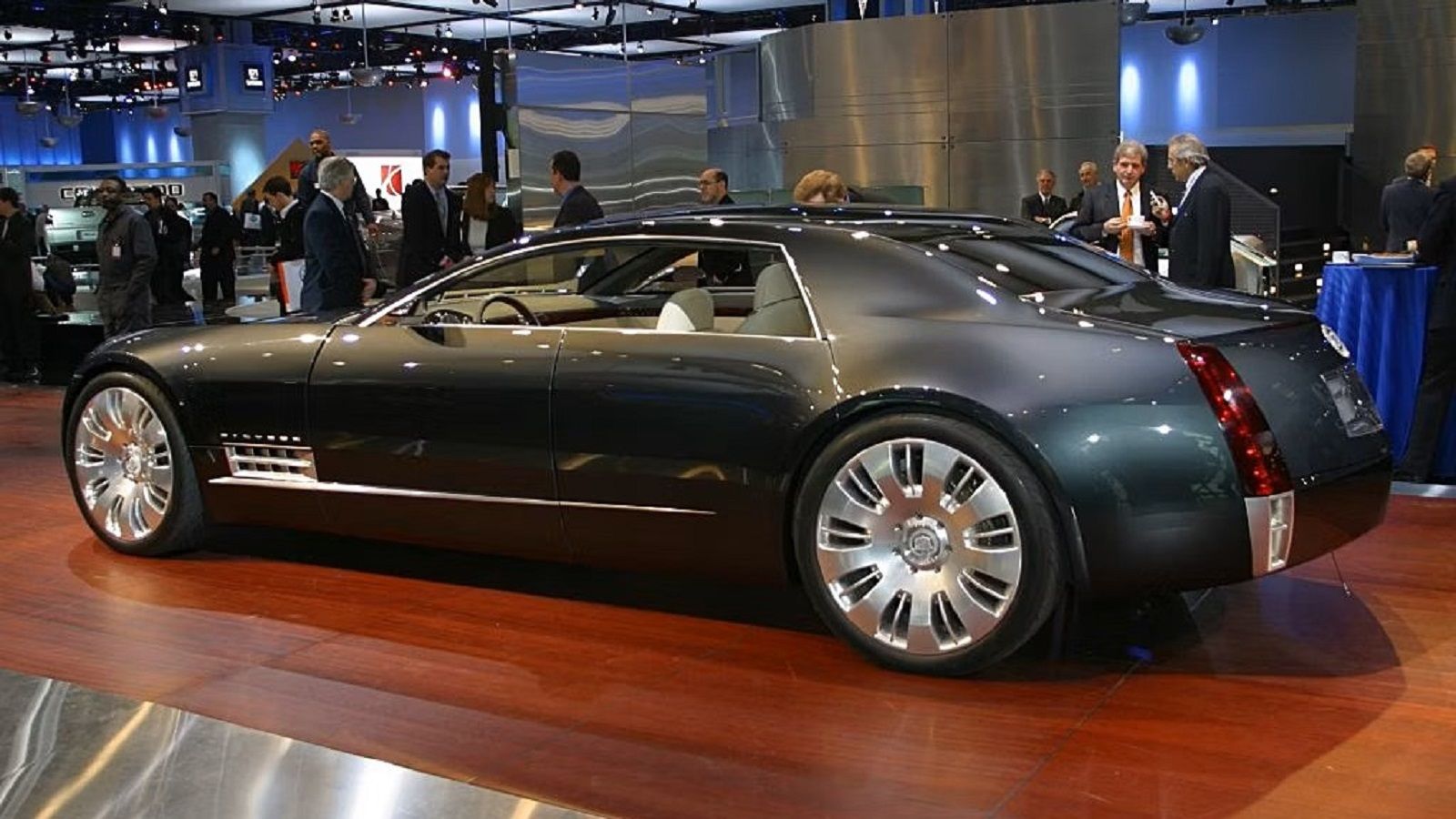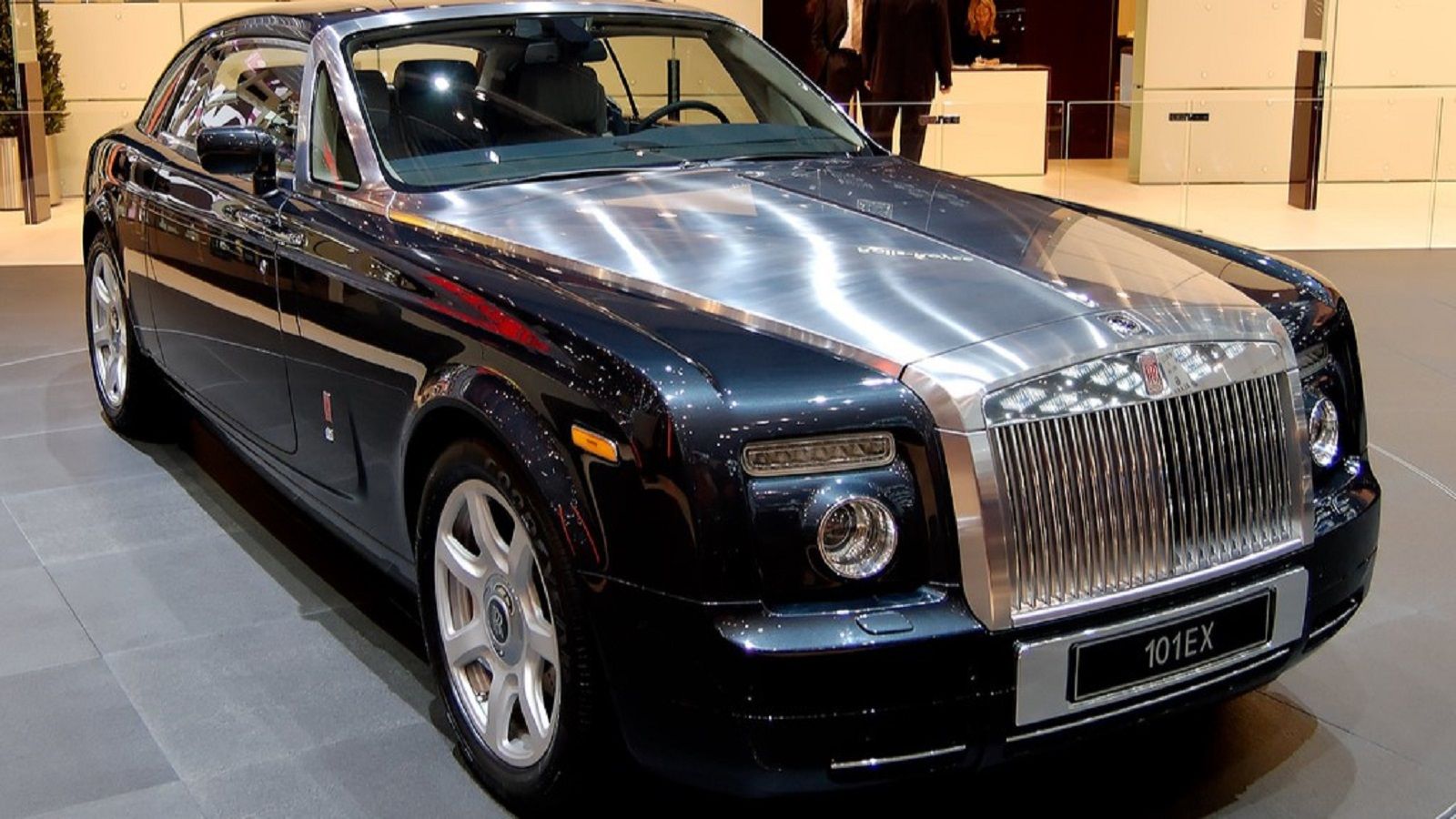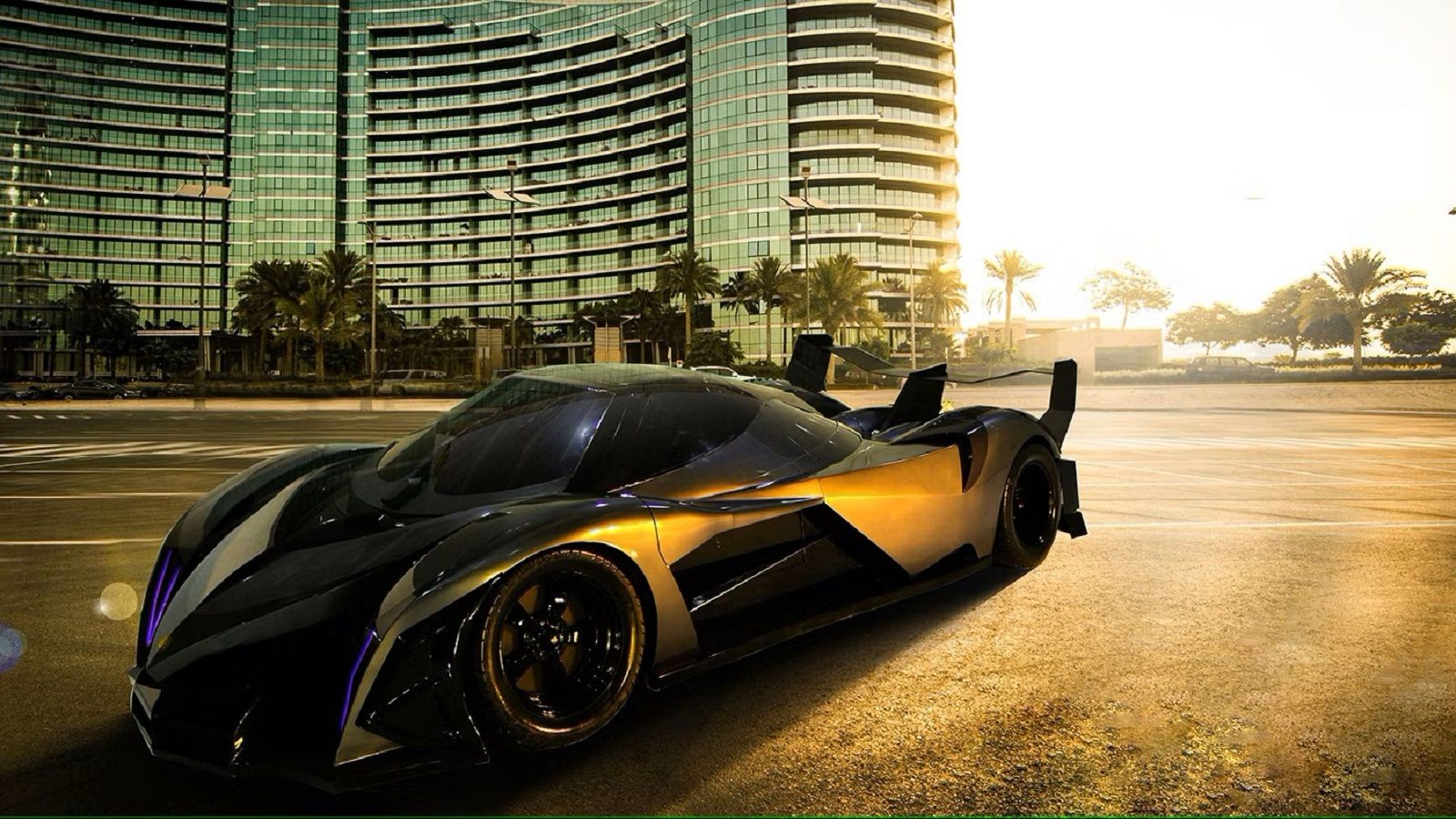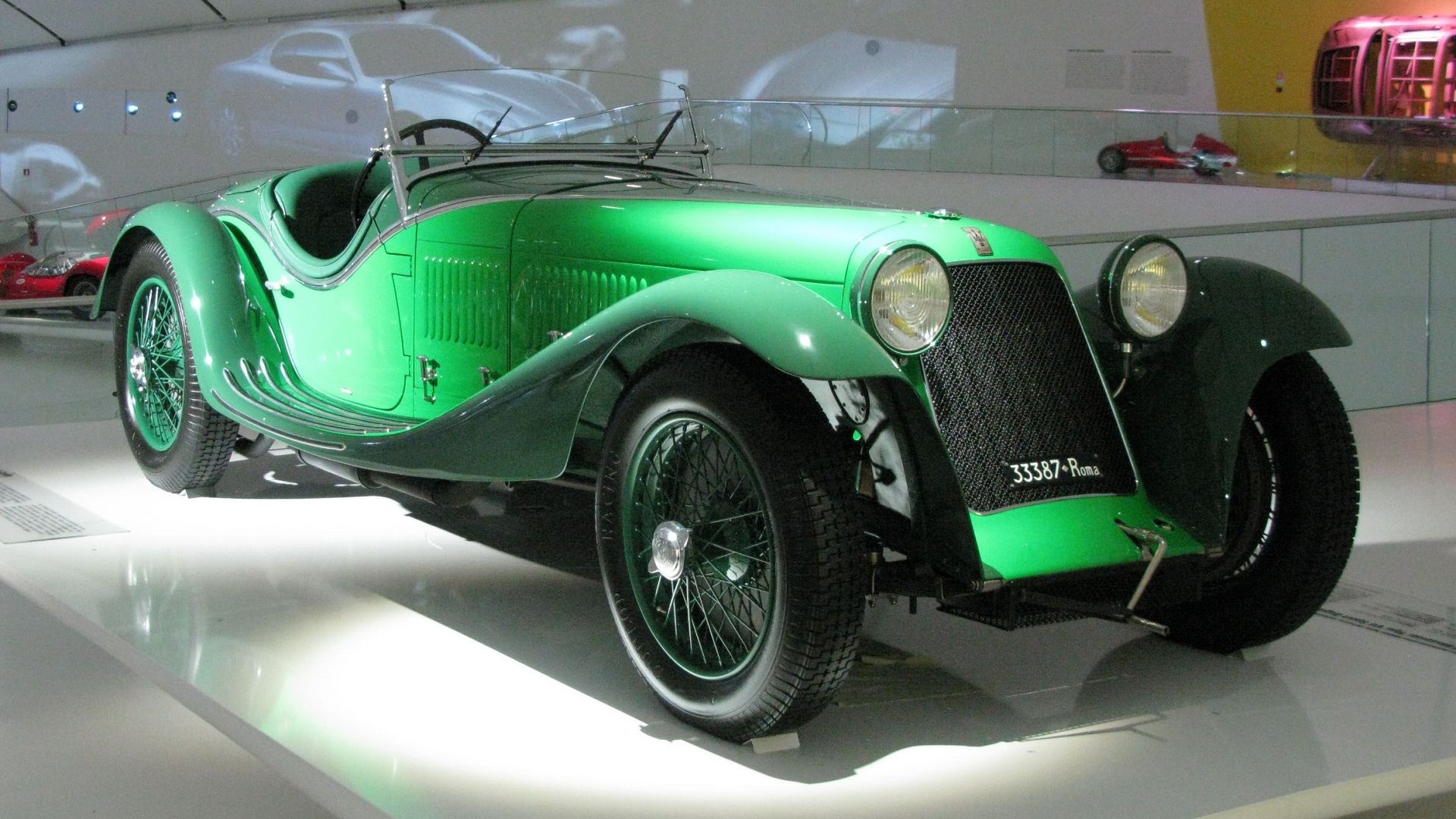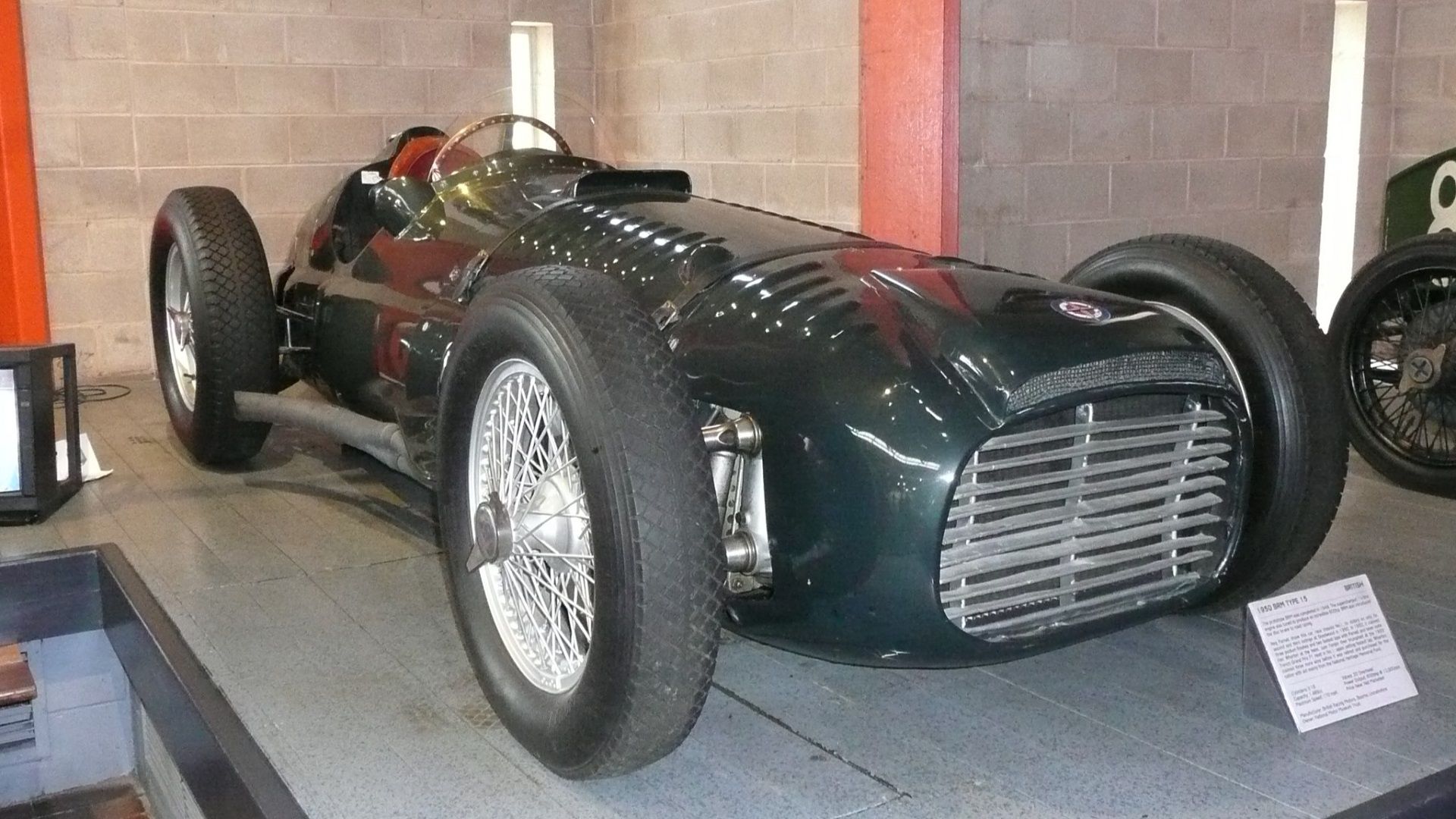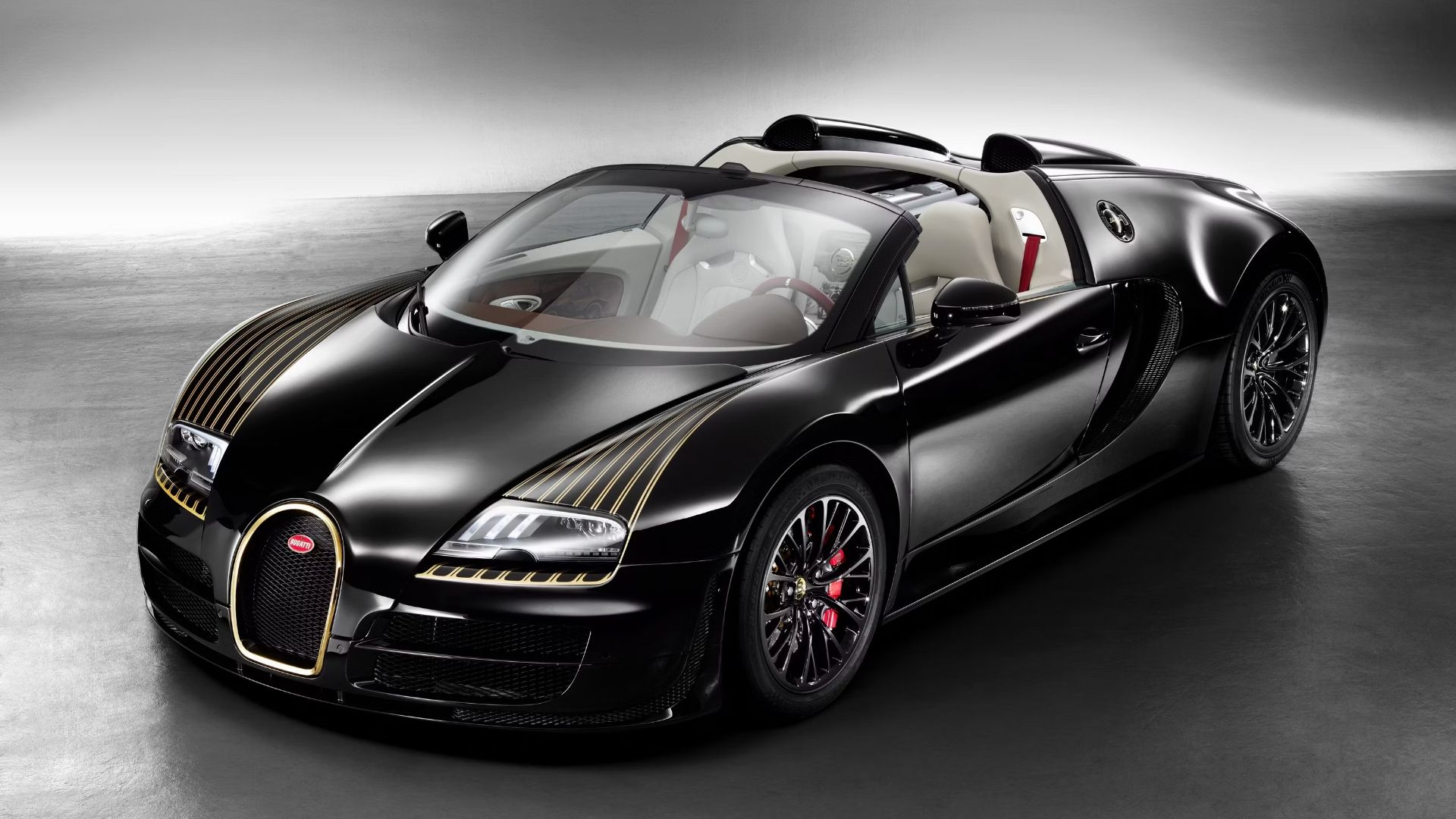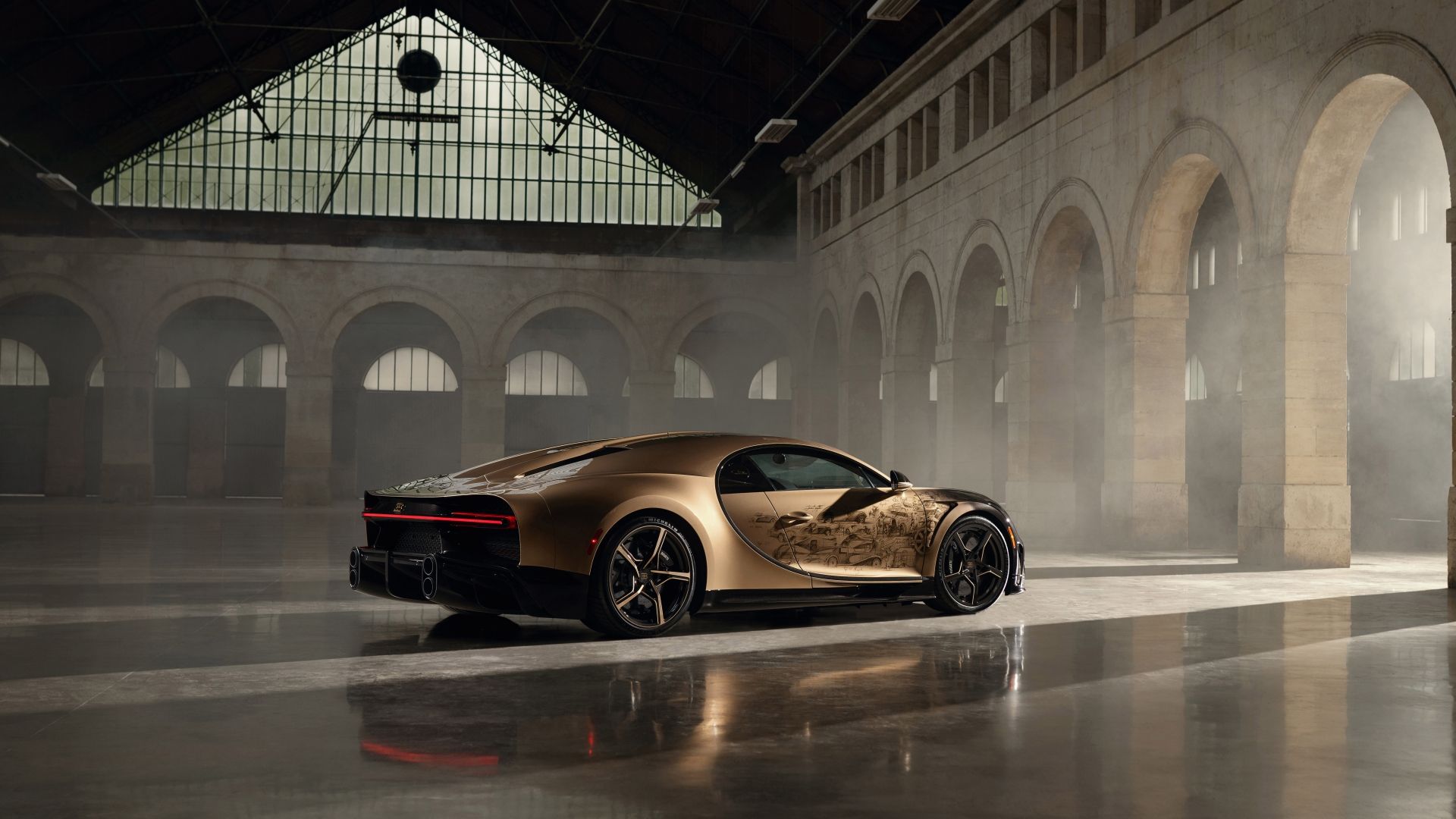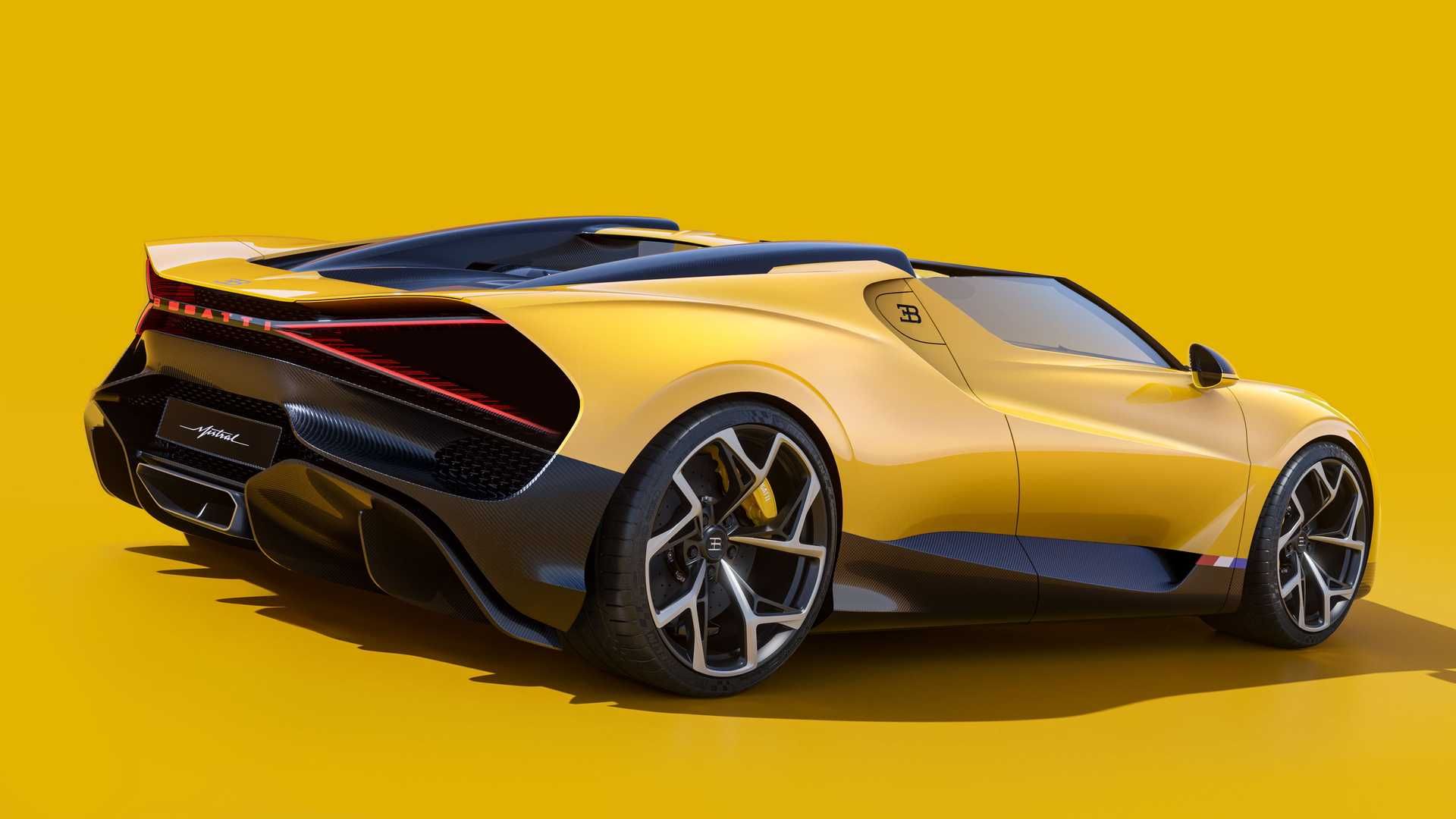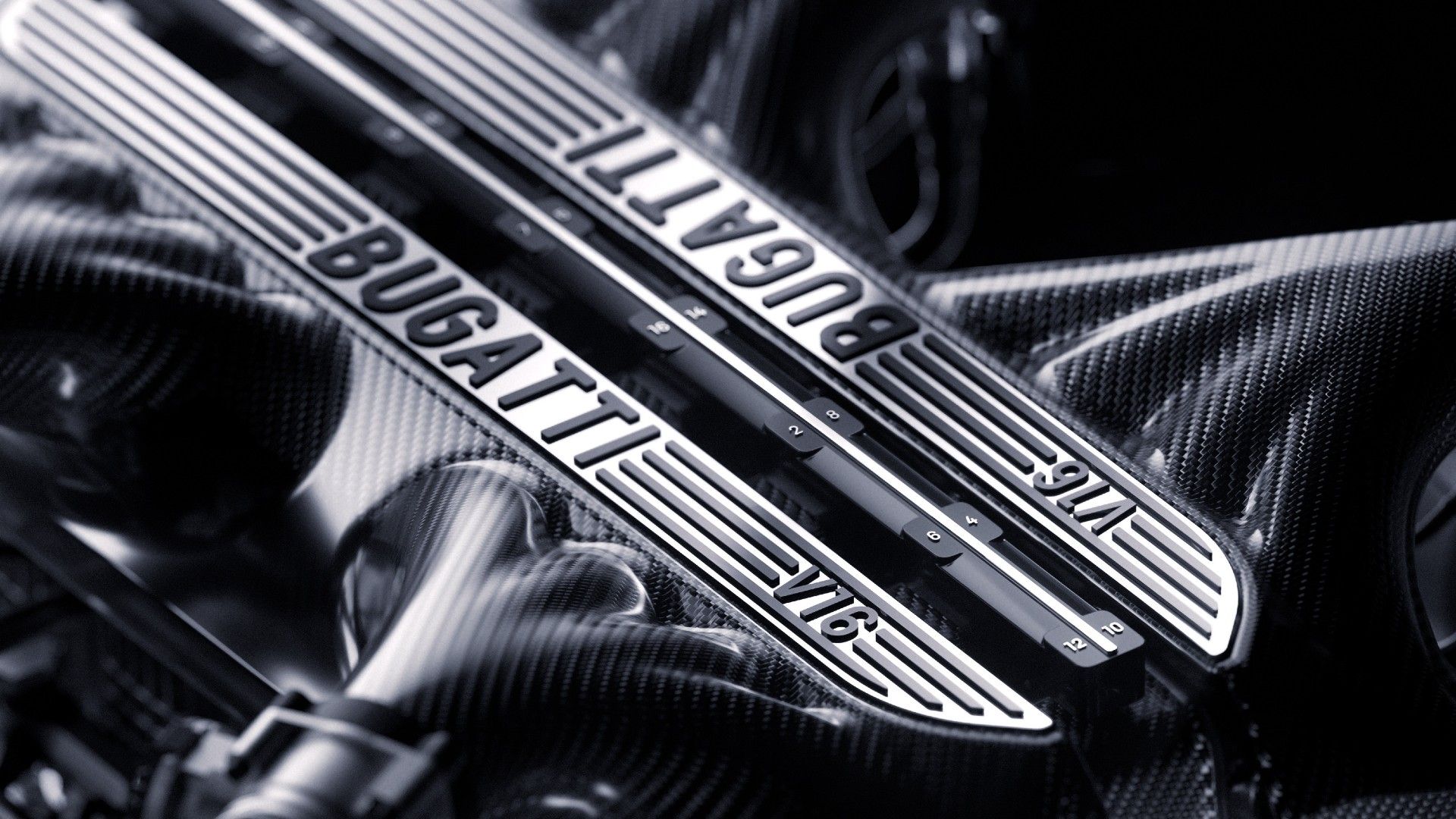Read update
- The V-16 and W-16 engines have been around for decades and have found a place in many of our hearts. The W-16 may have reached the end of its stint in production cars, but the V-16 will continue. Because of that, we have decided to refresh and update this list rather than letting it get lost in the wasteland of old pieces floating around on the internet. Keep checking back here for more updates and fresh information.
Summary
- Luxury cars in the 1920s popularized larger V-8, V-12, and V-16 engines.
- V-16 engines were powerful and smooth but costly to produce in early 1900s cars.
- Marmon's V-16 debut rivaled the V-12, while Cadillac's W-16 made the V-16 less popular.
The production of automobiles started life with relatively small engines, but as luxury cars emerged in the 1920s, carmakers began developing larger V-8 and V-12 engines. Some companies even went as far as to create massive V-16s. Along with the bigger and larger displacement V-12 and V-16 engines came the W-12 and W-16 versions, however unpopular they were simply because when one came out onto the market, the other had to give it a go as well.
Although these engines delivered lower vibration, thus increasing comfort inside the cabin, they typically produced as much power as a V-8 or V-12 engine, while being notably more expensive to produce. As a result, they were rarely used in automobiles, which is a shame because they ran so smoothly - a V-16 eliminates gaps in the power pulse by having three cylinders in the top position at all times. The V-16 debuted in production road cars in the United States in the early 1930s due to a tech war between Marmon and Cadillac.
Both companies wanted to be the first to produce a working V-16 engine that they could use in a new road car they had coming out. Since the upcoming V-12 was the engine in the limelight and the only one that had the attention of the media when the V-16 was introduced under the hood of the new model, the public, media, and even the lower-level Cadillac salespeople and employees were caught entirely by surprise. The V-16 was a new engine built to propel a new model to the top of the food chain in 1930 and beyond. Let's take a closer look at the short but intriguing history of V-16 (and W-16, for that matter) using cars below.
UPDATE: 2024/03/19 10:56 EST
The V-16 and W-16 engines have been around for decades and have found a place in many of our hearts. The W-16 may have reached the end of its stint in production cars, but the V-16 will continue. Because of that, we have decided to refresh and update this list rather than letting it get lost in the wasteland of old pieces floating around on the internet. Keep checking back here for more updates and fresh information.
In order to give you the most up-to-date and accurate information possible, the data used to compile this article was sourced from various manufacturer websites and other authoritative sources, including Hemmings, Car And Driver, Hagerty, HotCars, and Top Gear.
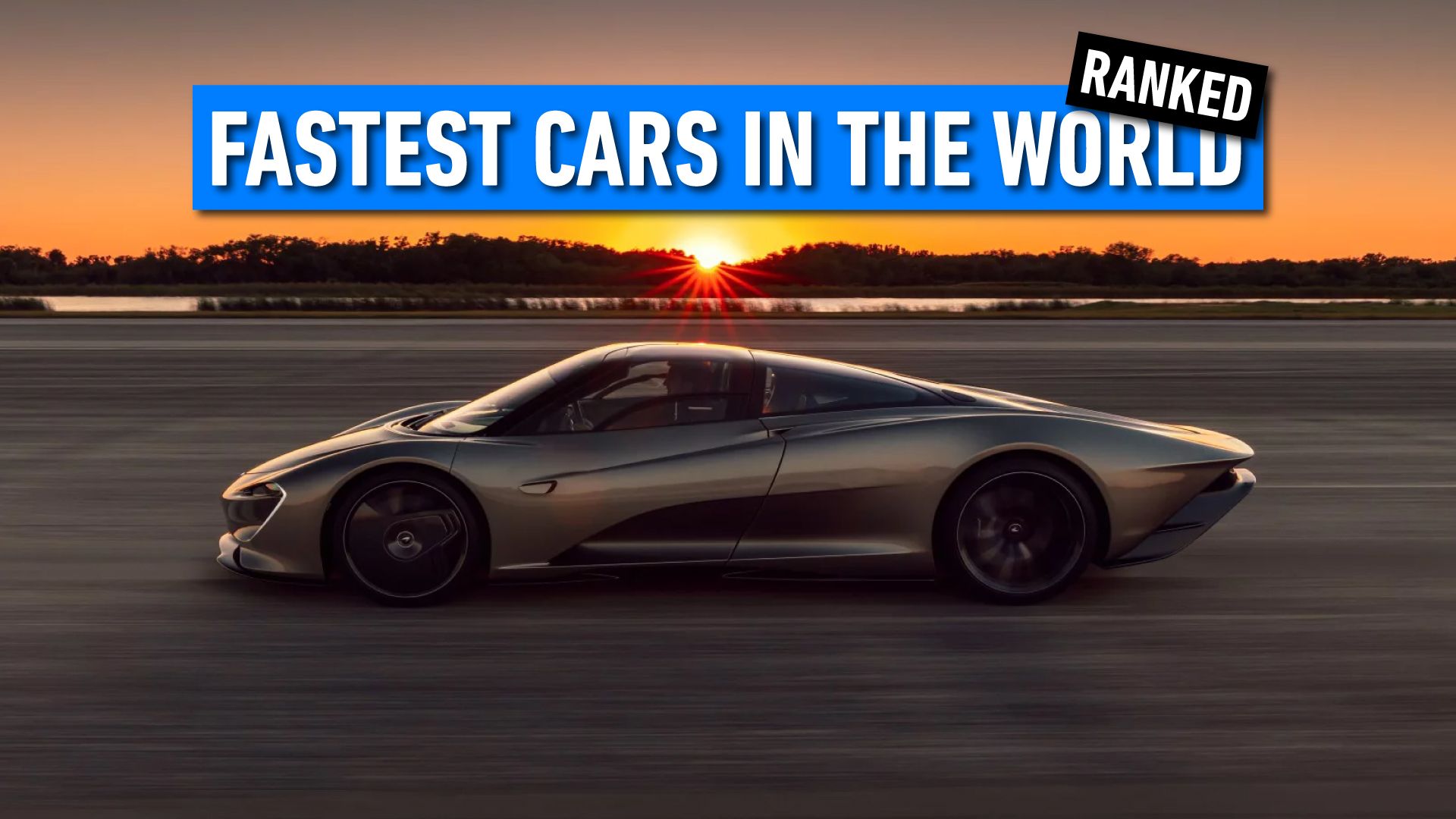
Fastest Cars In The World Ranked
Of all the production cars on earth, only a handful of models have a verified top speed record in excess of 300 mph.Cadillac And Marmon Built The First V-16 Production cars
After the Packard Motor Company introduced the mighty V-12 in 1915 and then retired it in 1923, the eight-cylinder engine was the most powerful option for you to buy. For the time period, an engine producing under 100 horsepower was not something to look down upon, so when the idea of a more powerful V-16 came up, the engineers at Cadillac went to work. Unfortunately for them, the head engineer at Marmon, Owen Nacker, was well ahead of them in designing the new engine type. So, when he offered to betray his current company to work for Cadillac, the history books were changed for good.
1930 Cadillac Series 452
Cadillac, a producer of more than a few obscure models over the years, was able to introduce the 1930 Cadillac Series 452 in January of '30, while with the loss of their top engineer,Marmon fell behind and introduced their version, a more powerful V-16, in November 1930. The company's new range-topping model, the Series 452, featured a narrow 45-degree V-16 with an overhead valve, a layout inspired by the Marmon engine. The massive 7.4-liter mill tipped the scales at a whopping 1,300 pounds and delivered 175 horsepower.
Performance Specifications
|
Engine |
7.4-liter V-16 |
|---|---|
|
Horsepower |
175 horsepower |
|
Torque |
271 pound-feet |
|
Transmission |
Three-speed manual |
|
Driveline |
RWD |
|
Curb weight |
5,300 pounds |
|
0-60 MPH |
24 seconds |
|
Top Speed |
100 MPH |
The car attracted rave reviews from the media and the public in the United States, so Cadillac sent five cars on a promotional tour in Europe that included 24 cities in 10 countries. The Cadillac V-16 was a massive success in 1930, with no fewer than 2,000 cars sold by June. But as the Great Depression hit the United States, demand dropped dramatically over the following months. Cadillac eventually sold less than 4,000 by 1937, when Cadillac introduced a new V-16 engine.
1931 Marmon Sixteen
Founded as a manufacturer of flour grinding mill equipment in 1851, Marmon started building cars in the early 1900s. By the 1910s, Marmon was already famous in the United States. Word has it that Marmon Howard got the idea while in France during World War I. Deployed there to lead the American Air Corp Technical Team, Marmon studied Bugatti's U-16 jet fighter engine and presented his idea of a V-16 design to engineer Owen Nacker in early 1920. A single crankshaft, overhead valve V-16 with reverse flow outboard intake and exhaust manifolds was finished by late 1926 before Nacker was recruited by Cadillac.
Following Nacker's departure, Marmon altered the engine's design to include fork-and-blade connecting rods, a central camshaft, a dual downdraft carburetor, an aluminum crankcase, cylinder blocks, and cylinder heads.
Performance Specifications
|
Engine |
8.0-liter V-16 |
|---|---|
|
Horsepower |
200 horsepower |
|
Torque |
380 pound-feet |
|
Transmission |
Three-speed manual |
|
Driveline |
RWD |
|
Curb weight |
4,800 pounds |
|
0-60 MPH |
20 seconds |
|
Top Speed |
100+ MPH |
The engine debuted in the Marmon Sixteen in 1931, a year after Cadillac introduced its own version. Although he narrowly missed being the first to launch a production V-16, Marmon takes credit for designing a more modern mill that weighed less than 1,000 pounds and generated 200 horsepower. The V-16 was also the largest produced, with a displacement of eight liters. The Marmon Sixteen was made for three years in small numbers. Marmon offered a variety of body styles, including sedans, coupes, and convertibles.
1938 Cadillac Series 90
While Marmon went bankrupt during the Great Depression and the Sixteen disappeared after only three years, Cadillac's V-16 car lived long enough to feature a second-generation engine. Although it sold only 50 units a year from 1935, Cadillac decided that its range-topping model, now renamed the Series 90, needed a new engine for 1938. And unlike the first V-16, the new engine marked a return to Cadillac's more traditional flathead design and featured a wider 135-degree angle. It also included twin carburetors and twin fuel pumps.
Performance Specifications
|
Engine |
7.1-liter V-16 |
|---|---|
|
Horsepower |
185 horsepower |
|
Torque |
318 pound-feet |
|
Transmission |
Three-speed manual |
|
Driveline |
RWD |
|
Curb weight |
5,415 pounds |
|
0-60 MPH |
21.1 seconds |
|
Top Speed |
90 MPH |
However, the new V-16 was nearly silent at idle, the operation was smoother, and it turned the Caddy into one of the quickest accelerating cars of its time. The engine also returned slightly better fuel economy. But the revised V-16 model wasn't as popular as the original car. Cadillac sold 315 units in 1938, 138 examples in 1939, and another 55 before the nameplate was discontinued in 1940.
The Cadillac V-16 was the first and also the last production car with a V-16 engine to emerge in the United States. Cadillac eventually built a concept car with a V-16 in the 2000s, but it never went into production.
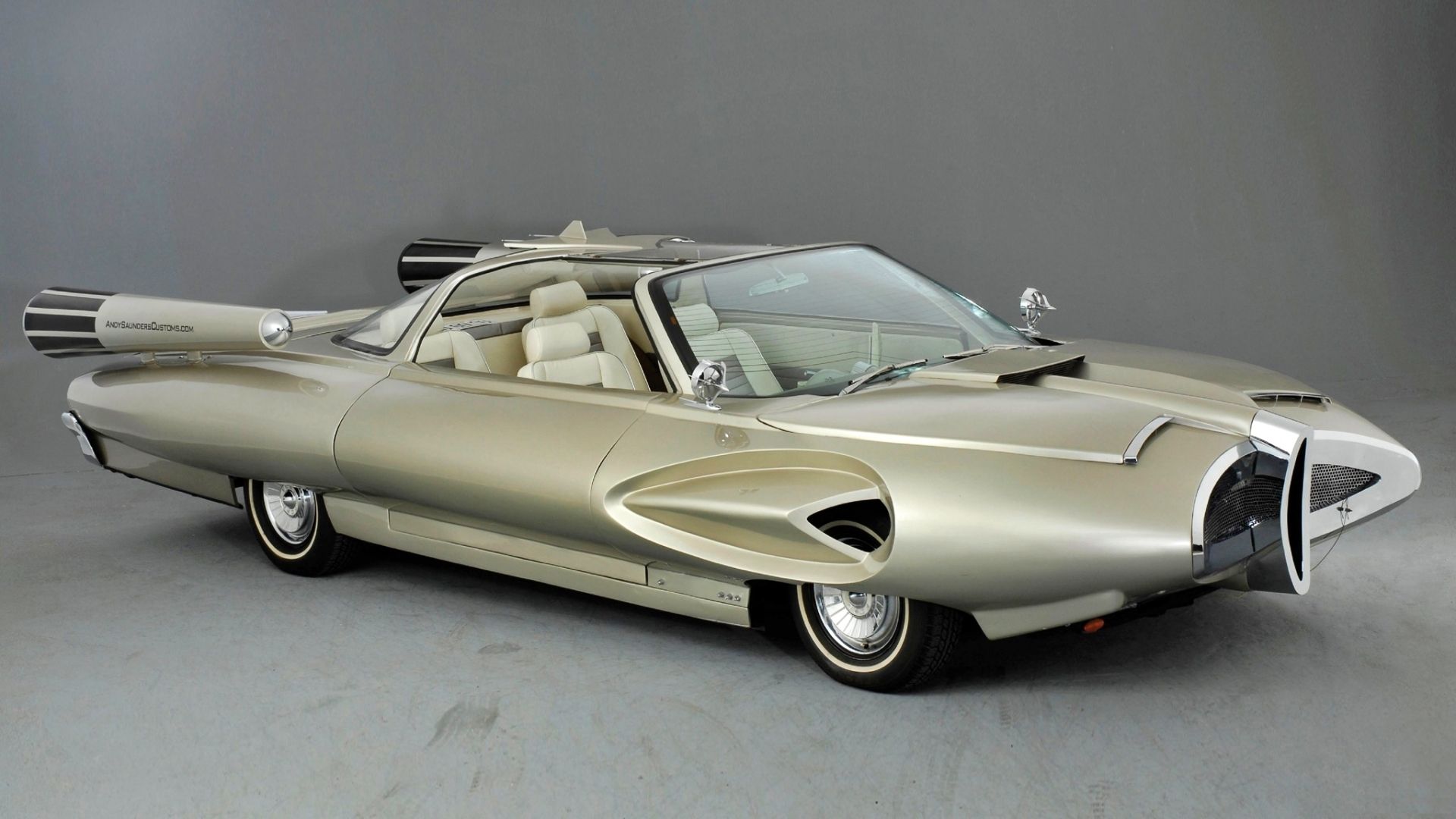
10 Concept Cars We’re Glad Never Made It To Production
While there have been plenty of bad concept vehicles that made it into production, thankfully these stinkers never made it to the showroomCadillac And Rolls-Royce Released V-16 Concept Cars
1932 Peerless V-16
Before World War II, Marmon and Cadillac weren't the only American companies that produced V-16 engines. Peerless also developed one, but just like Cadillac, it was based on Marmon's design. That's because Peerless was joined in 1929 by James A. Bohanon, who had been Marmon's purchasing agent for six years. Bohanon brought his knowledge of Marmon's V-16 engine to Peerless, which designed a similar engine with a single crankshaft and an aluminum crankcase. However, he went with alloy blocks and heads and did not use Marmon's crossflow design. The engine was lighter than Cadillac's but heavier than the V-16 that Marmon eventually launched in 1931.
Performance Specifications
|
Engine |
7.6-liter V-16 |
|---|---|
|
Horsepower |
175 horsepower |
|
Torque |
320 pound-feet |
|
Transmission |
Three-speed manual |
|
Driveline |
RWD |
|
Curb weight |
4,000 pounds |
|
0-60 MPH |
13 seconds |
|
Top Speed |
100 MPH |
But unlike its competitors, Peerless didn't get to put its engine into production. Peerless completed a V-16 prototype in 1931 and showcased it for the 1932 model year. Unfortunately, the company stopped producing cars because luxury vehicle sales dropped due to the Great Depression. Two V-16 coupes were in the works at Murphy's Pasadena body shop when Peerless decided to stop production. When Prohibition ended in 1933, Peerless converted its car factory into a brewery, ending any chance of a Peerless V-16 in the future.
2003 Cadillac Sixteen
About 63 years after it discontinued its first V-16 car, Cadillac revisited the idea for the Sixteen concept. Although GM had the option to weld a couple of V-8 crate engines together, it eventually decided to build a V-16 from scratch. However, the company's engineers did use the 6.0-liter V-8 of the upcoming C6 Corvette as a starting point, including its variable cam timing, a first for a pushrod design, and Displacement on Demand. The latter was an older active fuel management system that shut down cylinders to save fuel under low-load conditions. It could shut down either 12 or eight cylinders, which led to a combined fuel economy of 16.6 mpg.
Performance Specifications
|
Engine |
13.6-liter V-16 |
|---|---|
|
Horsepower |
1,000 horsepower |
|
Torque |
1,000 pound-feet |
|
Transmission |
Four-speed automatic |
|
Driveline |
RWD |
|
Curb weight |
5,004 pounds |
|
0-60 MPH |
4.0 seconds |
|
Top Speed |
198.8 MPH |
Bugatti, for instance, needed four turbochargers to blow past the 1,000-horsepower mark with the W-16-powered Veyron in 2005. Despite initial rumors that the Sixteen might go into production, it remained just a concept car. The Sixteen gave way to the now-popular Cadillac XTS, which offers a top-trim sport edition with 410 horsepower delivered by a twin-turbocharged V-6. The exterior design of the Sixteen inspired upcoming generations of the CTS sedan and even the Escalade SUV.
2004 Rolls-Royce 100EX
One year after Cadillac shocked the world with its massive V-16, Rolls-Royce introduced the 100EX concept. A two-door version of a grand tourer coupe built to celebrate the 100th anniversary of the meeting of Charles Rolls and Henry Royce. The 100EX was powered by a 9.0-liter V-16 engine developed by BMW and was built on an aluminum space-age chassis borrowed from the 2003 Phantom. The updated body styling of the 2004 Rolls-Royce 100 EX was shorter with a lowered roofline, which would be used for styling on the later versions of the Phantom Coupe.
Performance Specifications
|
Engine |
9.0-liter V-16 |
|---|---|
|
Horsepower |
770 horsepower |
|
Torque |
1,100 pound-feet |
|
Transmission |
Six-speed automatic |
|
Driveline |
RWD |
|
Curb weight |
5,577 pounds |
|
0-60 MPH |
5.3 seconds |
|
Top Speed |
155 MPH |
The company media contacts stated repeatedly that the car was not a concept model but rather an experimental car, making it on an all-new, higher playing field than any other concept car to come before it. The 100EX was followed by a coupe version called the 101EX in 2004, which previewed the Phantom Drophead Coupe. The production model was launched with a V-12 engine instead.
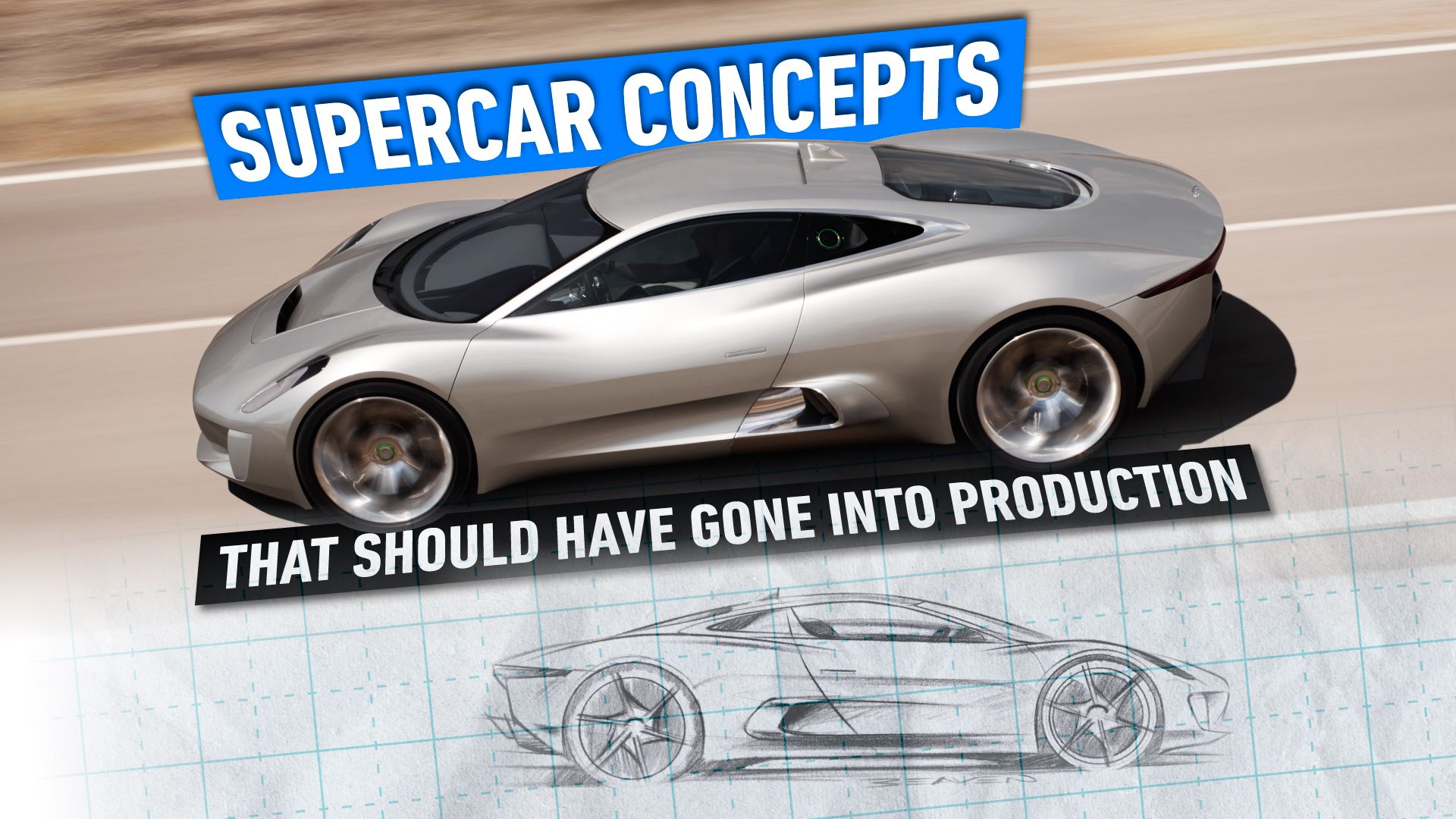
10 Supercar Concepts That Should Have Gone Into Production
With so many reasons why concept cars never make it to production, here are ten supercar concepts that could have changed the industry.Mercedes-Benz And BMW Experimented With The V-16
1988 BMW 767iL Goldfisch
The V-16 in the Rolls-Royce 100EX concept wasn't the first such engine developed by BMW. The German firm began working on its first V-16 as an experimental engine in 1987. Known as Project Goldfisch, the V-16 was actually an M70 V-12 engine with four extra cylinders. Tested in 1988, the engine was mounted in an E32-generation 7 Series model. BMW went with a 750iL version, usually powered by a V-12, and called it the 767iL. Because the engine was longer than the V-12, BMW was forced to install a cooling system in the trunk and massive cooling vents in the rear fenders. So not only did the 767iL look weird, but it had also lost its practicality without space in the trunk.
Performance Specifications
|
Engine |
6.7-liter V-16 |
|---|---|
|
Horsepower |
402 horsepower |
|
Torque |
452 pound-feet |
|
Transmission |
Six-speed manual |
|
Driveline |
RWD |
|
Curb weight |
3,329 pounds |
|
0-60 MPH |
6.0 seconds |
|
Top Speed |
175 MPH |
The engine was presented internally by BMW, but the company decided to pass on the idea. On top of not being very practical due to its size, BMW bosses also considered that a production V-16 would start an "arms race" with other manufacturers, Mercedes-Benz included. Moreover, BMW was already working on a beefed-up version of its M70 V-12 engine with 375 horsepower, only 27 horses below the V-16.
The first-generation Bentley Mulsanne also trialed the engine as a possible upgrade to the already available V-8. Because it featured a massive, 6.75-liter V-8, the Mulsanne had plenty of room for the V-16 and its cooling system in its engine bay, but the project was shelved, and Bentley continued to use naturally aspirated and turbocharged V-8 engines.
1989 Mercedes-Benz 800 SEL
Having learned of BMW's Goldfisch project, Mercedes-Benz began developing its own V-16 engine. Details on Stuttgart's plans remain vague to this day. Still, the automotive media reported about an S-Class model with a V-16 engine in early 1989. That's when Mercedes-Benz was still working on the W14-generation S-Class, which was launched in 1991.
In an era when Mercedes cars were built like tanks, there were also reports that Mercedes-Benz had built a small fleet of 85 prototypes with the V-16 engine, but there's no proof of their existence aside from some engine drawings. The V-16 was reportedly canceled due to increasing concern for climate protection and fear of sending a wrong message to the public.
Performance Specifications
|
Engine |
8.0-liter V-16 |
|---|---|
|
Horsepower |
680 horsepower |
|
Torque |
590 pound-feet |
|
Transmission |
Five-speed manual |
|
Driveline |
RWD |
|
Curb weight |
3,770 pounds |
|
0-60 MPH |
6.0 seconds |
|
Top Speed |
155 MPH |
Apparently, Mercedes-Benz also considered a W-16 engine for the S-Class. This mill never made it past the blueprint stage, but it seems that the engineers in Stuttgart used three 2.6-liter six-cylinder engines to create the W setup. Documents from the company's archives show a version with two valves per cylinder and 490 horsepower and a variant with five valves per cylinder and 680 horsepower. Needless to say, it would have created a monster of an S-Class, but it would also have been a packaging nightmare.
2017 Devel Sixteen
Heavily inspired by jet fighter designs, it features a short, slanted nose, a canopy-style cabin, and a long, aerodynamic rear section. Under the hood, the Sixteen hides a quad-turbo V-16 built by Steve Morris Engines from Michigan. Upon unveiling the prototype, Devel claimed a power rating of around 5,000 horsepower, a sprint to 60 mph in just 1.6 seconds, and a top speed of about 350 mph.
Performance Specifications
|
Engine |
12.3-liter V-16 |
|---|---|
|
Horsepower |
5,007 horsepower |
|
Torque |
3,757 pound-feet |
|
Transmission |
Eight-speed automatic |
|
Driveline |
AWD |
|
Curb weight |
5,070 pounds |
|
0-60 MPH |
1.6 seconds |
|
Top Speed |
350 MPH |
Although the prototype is fully functional, a production model has yet to surface, but Steve Morris Engine released footage of the engine generating a whopping 5,007 horsepower on the dyno. The journey to create this awesome car began back in 2017 with a dream. A dream that many people gave up on along the way. Thankfully, the people with the drive and the cash continued pushing forward until the first prototype was finished and delivered to a Japanese collector in July of 2022. Mission accomplished for a very dedicated team.
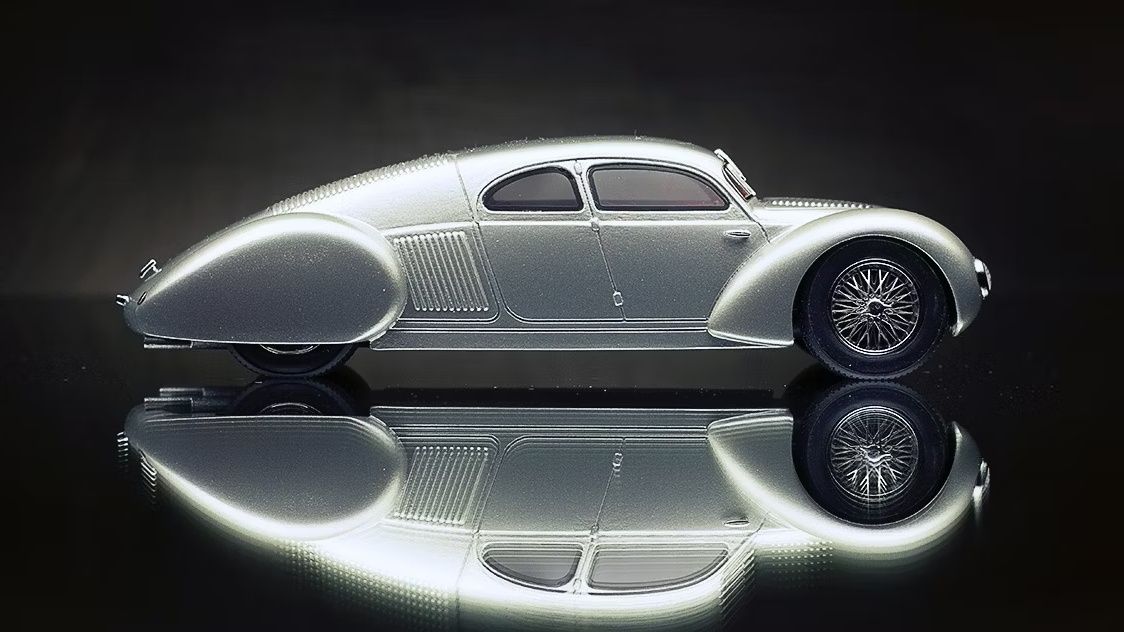
Porsche's Long Lost 16-Cylinder Supercar From The 1930s
The iconic 911's great-grandfather, this is a mid-engined supercar that Ferdinand Porsche envisioned nearly three decades earlierBugatti And Maserati Raced V-16 Cars
1929 Maserati Tipo V4
One year before Cadillac launched the first production car with a V-16 engine, Maserati fitted some of its race cars with experimental V-16s built from two Alfa Romeo 26B mills into a single crankcase and transfer case. However, they each had individual superchargers and prototype Weber carburetors mounted by Edoardo Weber himself. The engine displaced only 4.0 liters and generated a solid 305 horsepower.
Performance Specifications
|
Engine |
Supercharged 4.0-liter V-16 |
|---|---|
|
Horsepower |
305 horsepower |
|
Torque |
NA |
|
Transmission |
Four-speed manual |
|
Driveline |
RWD |
|
Curb weight |
2,315 pounds |
|
0-60 MPH |
7.0 seconds |
|
Top Speed |
161.6 MPH |
The Tipo V4 made its first outing at the Gran Premio di Monza in 1929 but struggled due to increased tire wear and reduced braking at the front (all due to the heavy twin-engine setup). An upgraded model managed to win the Gran Premio di Tripoli and take third place at Monza and Coppa Acerbo. But the Tipo V4's most significant achievement was setting a world speed record of 152.8 mph at a special event in Cremona, Italy.
1930s Auto Union Race Cars
Formed in 1932 by struggling auto manufacturers Audi, DKW, Horch, and Wanderer, Auto Union wanted a showpiece project for the German car shows. The auto Union chair was advised to meet with Ferdinand Porsche, who had just established a race car division. In 1933, Adolf Hitler announced a state-sponsored racing program for Mercedes-Benz, but he was eventually persuaded to include Auto Union as well. With sponsorship from the German government, Porsche went on to develop a mid-engined RWD car, a layout that was unusual at the time. The original car was called the Auto Union Type A, but it was followed by upgraded models named the Type B, C, and D, all of which raced through 1939.
Performance Specifications
|
Engine |
6.0-liter V-16 |
|---|---|
|
Horsepower |
520 horsepower |
|
Torque |
651 pound-feet |
|
Transmission |
Four-speed manual |
|
Driveline |
RWD |
|
Curb weight |
1,618 pounds |
|
0-60 MPH |
NA |
|
Top Speed |
195 MPH |
The first cars developed around 295 horsepower, but later models surpassed the 500-horsepower barrier. Far more spectacular in appearance than cars from rivals Mercedes-Benz, the Auto Union was also competitive, winning numerous races in the European Championship, the series that preceded Formula One. Auto Union also set several records, including a top speed of 199 MPH with a streamlined car with an enclosed cockpit. The Type C was rumored to be able to hit 211 mph. Unlike its predecessors, the Type D was powered by a supercharged V-12 engine. Production of Auto Union race cars stopped when World War II broke out, and many of the cars were lost during the conflagration.
1938 Alfa Romeo Tipo 316
As Auto Union moved away from the V-16 engine for the 1938 racing season, Alfa Romeo was preparing to enter a car fitted with a 16-cylinder mill in the European Championship. The Tipo 316 was part of a three-car lineup explicitly designed for the new rules of the 1938 season. The other two were the Tipo 308 and Tipo 312, fitted with straight-eight and V-12 engines, respectively. The 316 was based on the 12C, a car that Alfa Romeo produced in 1936 and 1937. It had a 7,500 redline and powered the Tipo 316 to a second-place finish in the Grand Prix of Italy.
Performance Specifications
|
Engine |
4.1-liter V-16 |
|---|---|
|
Horsepower |
212 horsepower |
|
Torque |
273 pound-feet |
|
Transmission |
Four-speed manual |
|
Driveline |
RWD |
|
Curb weight |
1,664 pounds |
|
0-60 MPH |
7.0 seconds |
|
Top Speed |
162 MPH |
Unfortunately for the manufacturer, the V-16 race car could still not compete with the German race cars, causing some serious internal conflicts. Numerous people left during and between racing seasons, making it hard to be a consistent player on the track. One of the final straws happened in 1939 when Farina resigned after the first laps were led, creating chaos during the race. By the end of 1939, Alfa Romeo lost interest in the project as it started working on the iconic 158 Alfetta race car.
1951 BRM P15
Automakers moved away from the V-16 engine after World War II, but British Racing Motors made one final attempt in the early 1950s. Seeking the same success as Auto Union before WW2, BRM set out to create a V-16 engine that would comply with the new Formula One regulations. This meant that it had to displace no more than 1.5 liters. It also had to be supercharged.
The engine was somewhat revolutionary, mostly because it featured a twin centrifugal supercharger instead of the more traditional Roots-type unit. Developed by Rolls-Royce, the supercharger design was based on the units used in the Merlin aero engine. The design allowed for tremendous power at high revs, but it also meant that the engine produced significantly less oomph in the lower range. Drivers were thus forced to keep the revs within a very narrow power band, which proved to be the car's main shortcoming.
Performance Specifications
|
Engine |
Supercharged 1.5-liter V-16 |
|---|---|
|
Horsepower |
525 horsepower |
|
Torque |
NA |
|
Transmission |
Five-speed manual |
|
Driveline |
RWD |
|
Curb weight |
1,625 pounds |
|
0-60 MPH |
10.5 seconds |
|
Top Speed |
170 MPH |
The BRM P15 debuted in 1950 in non-championship races and won the Goodwood trophy. BRM entered the car in the Formula One championship in 1951, but the P15 raced in just one of eight events, finishing fifth and seventh. BRM prepared to race the car in F1 in 1952 as well, but with Alfa Romeo retired from the series, and Ferrari left as the dominant force, the FIA decided to run the season with Formula Two regulations. The P15 didn't meet these new regulations, so the project was abandoned. The P15 was raced in five more non-championship events through 1953, scoring second place at the Albi Gran Prix and winning the Glover Trophy at Goodwood in 1953. The BRM P15 was the last race car to feature a V-16 engine.
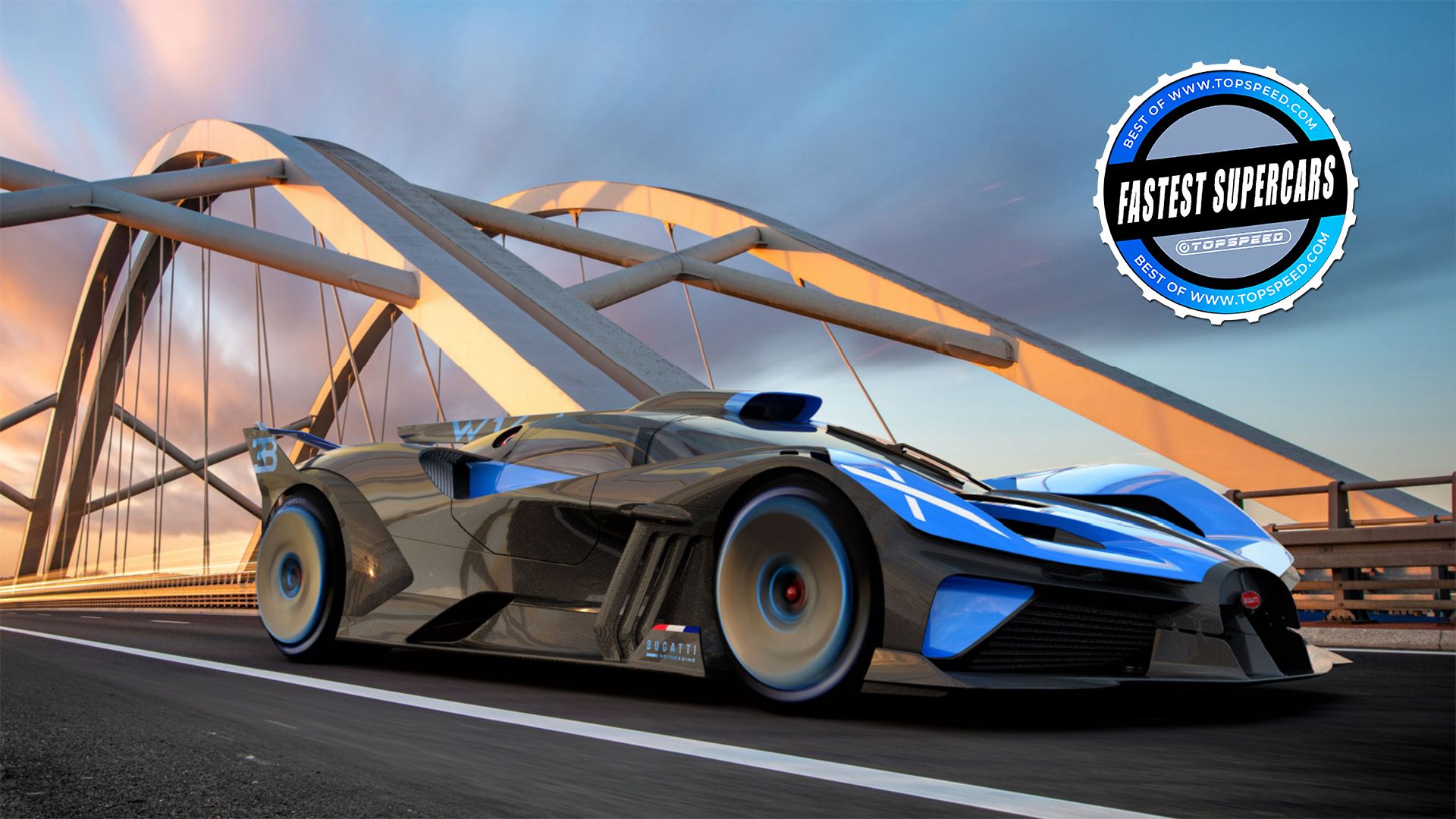
Fastest Bugattis Ever Produced
The French supercar maker has been at the top of the performance food chain throughout most of its existence and these models certainly prove itBugatti Built The Most Famous W-16 Cars
1995 Jimenez Novia
The W configuration is notably different than the more familiar V layout because they feature three or four-cylinder banks on the same crankshaft. When viewed from the front, the layout resembles the letter W. However, these engines also feature 16 cylinders, so they have a well-deserved place on this list. W-16 engines are notably scarcer than V-16 mills. While the latter made its first appearance in a car in 1930, the W-16 did not debut in an automobile until 1995.
A one-off supercar, it was developed by Ramon Jimenez, a French motorcycle racer, as a tribute to the iconic Porsche 917. Development reportedly started in 1985 in a small workshop in Avignon, where Jimenez made his own carbon-fiber composite panels from scratch. A single car was finished in 1995, powered by a 4.1-liter W-16 created by combining four Yamaha FZR1000 motorcycle engines. The W-16 was rated at 560 horsepower and enabled the Novia to hit a verified top speed of 236 mph, a record at the time.
Performance Specifications
|
Engine |
4.1-liter W-16 |
|---|---|
|
Horsepower |
560 horsepower |
|
Torque |
319 pound-feet |
|
Transmission |
Six-speed manual |
|
Driveline |
RWD |
|
Curb weight |
1,962 pounds |
|
0-60 MPH |
3.0 seconds |
|
Top Speed |
236 MPH |
The Novia cost Jimenez almost $900,000, and his initial plan was to enter the car in the 24 Hours of Le Mans race and put the car into series production with a price of around $300,000. Both projects failed due to financial difficulties and the fact that the French government mandated that a separate chassis be made for crash testing.
2005 Bugatti Veyron
Introduced in 2005, the Veyron was the first series production car with such an engine. The powerplant was created by joining two Volkswagen VR8 engines at the crankcase and placing them on a single crankshaft. Considered a technological wonder, the quad-turbo W-16 in the Veyron debuted with 987 horsepower and 882 pound-feet of torque. However, it was later upgraded to deliver 1,184 horsepower.
Performance Specifications
|
Engine |
8.0-liter quad-turbocharged W-16 |
|---|---|
|
Horsepower |
987 horsepower |
|
Torque |
922 pound-feet |
|
Transmission |
Seven-speed automatic |
|
Driveline |
AWD |
|
Curb weight |
4,167 pounds |
|
0-60 MPH |
2.5 seconds |
|
Top Speed |
253 MPH |
The engine helped Bugatti set a world top speed record of 253.8 mph with Veyron in 2005 and 267.8 mph with the Veyron Super Sport in 2010. The same engine was used in the Bentley Hunaudieres, Audi Rosemeyer, and Bugatti 16C Galibier concept cars. The Bentley and the Audi featured earlier, naturally aspirated versions of the mill. The Veyron remained in production for 10 years, spawning a handful of variants and countless special edition models.
2016 Bugatti Chiron
The Chiron replaced the Veyron in 2016 and continued the legacy of the 8.0-liter W-16. A heavily redesigned car inside and out, the Chiron also features an updated version of the quad-turbo W-16. The latter was built to celebrate a new top speed record achieved with a prototype model at 304.7 mph, making the Chiron the first production car that broke the 300-mph barrier.
Performance Specifications
|
Engine |
8.0-liter quad-turbocharged W-16 |
|---|---|
|
Horsepower |
1,479 horsepower |
|
Torque |
1,180 pound-feet |
|
Transmission |
Seven-speed automatic |
|
Driveline |
AWD |
|
Curb weight |
4,389 pounds |
|
0-60 MPH |
2.4 seconds |
|
Top Speed |
261 MPH |
Just like the Veyron, the Chiron spawned various limited-edition models, but it was also used as a base for heavily modified versions, namely the one-off La Voiture Noire and the limited-edition Divo and Centodieci. Bugatti plans to build 500 Chirons before developing a replacement. However, the W-16 will be discontinued once the Chiron goes into the history books.
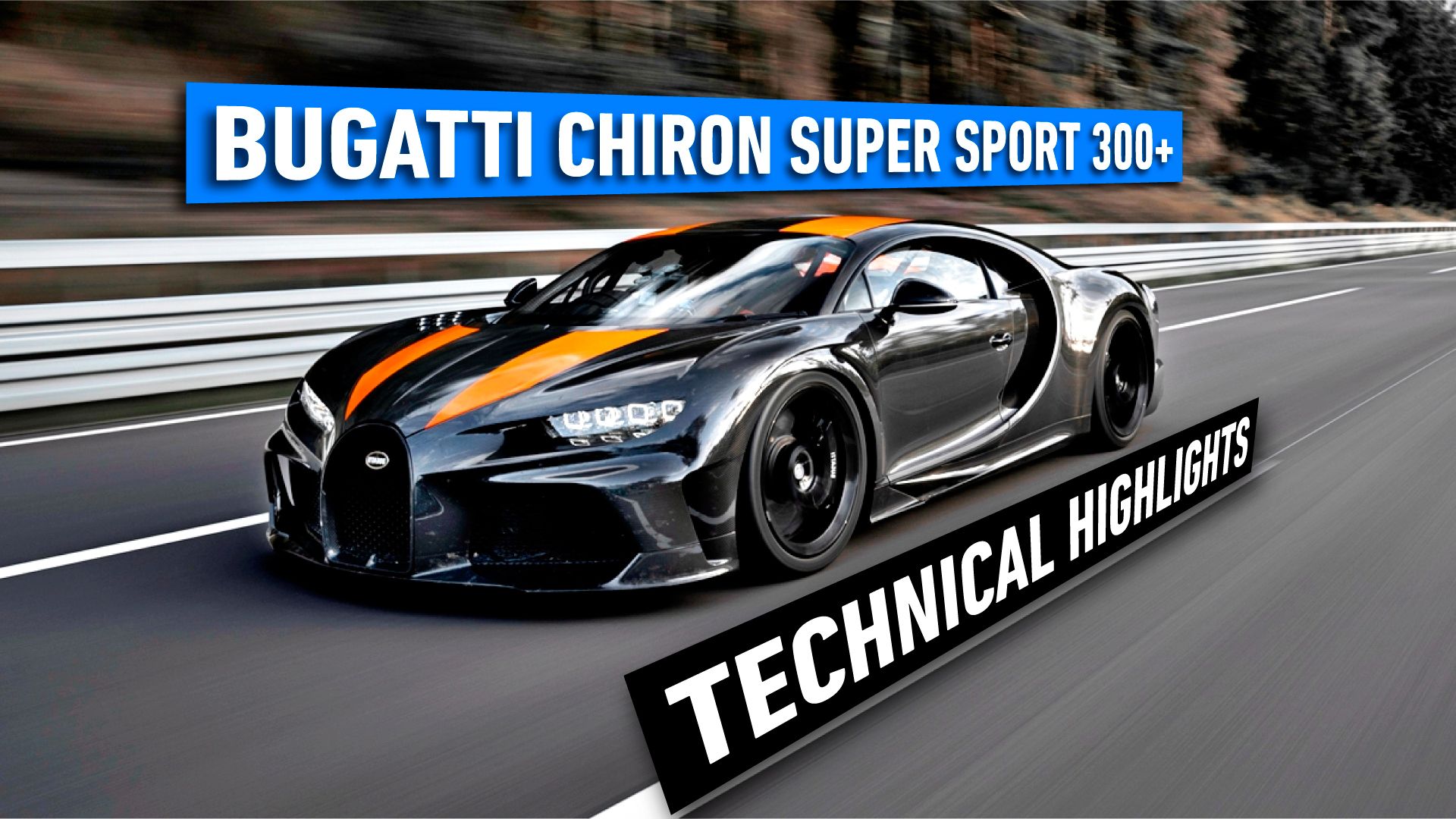
10 Technical Highlights Of The Fastest Car In The World In 2024
Learn about the incredible innovation and engineering that helped the Bugatti Chiron Super Sport 300+ reach its top speed of 304.77 mph.Bugatti Discontinues Its Iconic W-16 And Replaces It With... A V-16
The Mistral Will Be The Last Bugatti To Feature A W-16 Engine
Bugatti's plan to say goodbye to its iconic W-16 engine involved developing a roadster based on the Chiron. However, they wanted the open-top Bugatti to radiate a unique identity. Therefore, the automaker developed the Mistral (the name of a wind that blows through the Rhone valley to the Mediterranean) from scratch. Company head honcho Emilio Scervo said as Bugatti never intended to have a roadster model on the Chiron lineup, it had to develop the Mistral from the ground up.
Drawing inspiration from past Bugattis like the 1934 Type 57 Roadster Grand Rapid, the automaker began designing the platform for the W-16's last performance. The Mistral and the ancient Type 57 share several similarities, including swooping rear aerodynamic elements. Mirroring founder Ettore Bugatti's love for the black and yellow color schemes, the automaker gave the debut W-16 Mistral the colors of a bee.
Most of the work involved in developing the Mistral involved designing the car to meet safety standards and withstand enormous speeds while maintaining Bugatti's design philosophy. Bugatti claims increased chassis rigidity and used lightweight composite materials to reduce weight. The automaker also added that it built a new advanced air intake system specifically for the Mistral.
The final Bugatti W16 had to dazzle the automotive world; the engine had to sing the finest swansong ever heard in the automotive arena. Therefore, Bugatti bolted the Bugatti Chiron Super Sport 300+'s engine, the most potent W16 mill in automotive use, onto the Mistral's chassis. With such a powerful engine, the Mistral would surely outperform Bugatti's last roadster, the Grand Sport Vitesse, which maxed out at 254 MPH, making it one of the fastest Bugattis ever made.
Performance Specifications
|
Engine |
8.0-liter quad-turbocharged W-16 |
|---|---|
|
Horsepower |
1,578 horsepower |
|
Torque |
1,180 pound-feet |
|
Transmission |
Seven-speed automatic |
|
Driveline |
AWD |
|
Curb weight |
4,400 pounds |
|
0-60 MPH |
2.4 seconds (est.) |
|
Top Speed |
261 MPH |
(Specs: Bugatti)
Bugatti Is Developing A Hybrid V-16 Powertrain Alongside Rimac
In an era when downsizing is in vogue, some might have expected Bugatti would ditch the 16-cylinder layout for an engine with fewer cylinders. However, Bugatti did the most Bugatti thing ever, announcing it would ditch the W-16 for a V-16 featuring hybrid technology. The automaker posted a clip of the V-16 and its intoxicating tune, exciting automotive enthusiasts worldwide. With Rimac involved in the engine's development, Bugatti's next 16-cylinder powertrain may just be its most potent yet.
Rimac, an electric hypercar manufacturer, and Bugatti merged to form Bugatti-Rimac, with the Croatian company holding a 55 percent stake in the company. Company chief executive Mate Rimac told Top Gear that Bugatti's German owners wanted the next Bugatti to be fully electric. He said all the company would have had to do was rebadge the Nevera into a Bugatti. However, he fought against VW and Porsche's vision, insisting that upcoming Bugattis had to have combustion engines with hybrid tech.
Mate Rimac won, which means that for the foreseeable future, Bugattis will have hybrid powertrains. He said that the next Bugatti would be entirely new, sharing no parts with past Rimacs or Bugattis. Despite hearing the rumble of the upcoming V-16 engine, we haven't received detailed information about it - there's no word on horsepower and torque figures, engine capacity, cylinder count, or number of turbos. Mate Rimac promised, however, that we would be surprised.
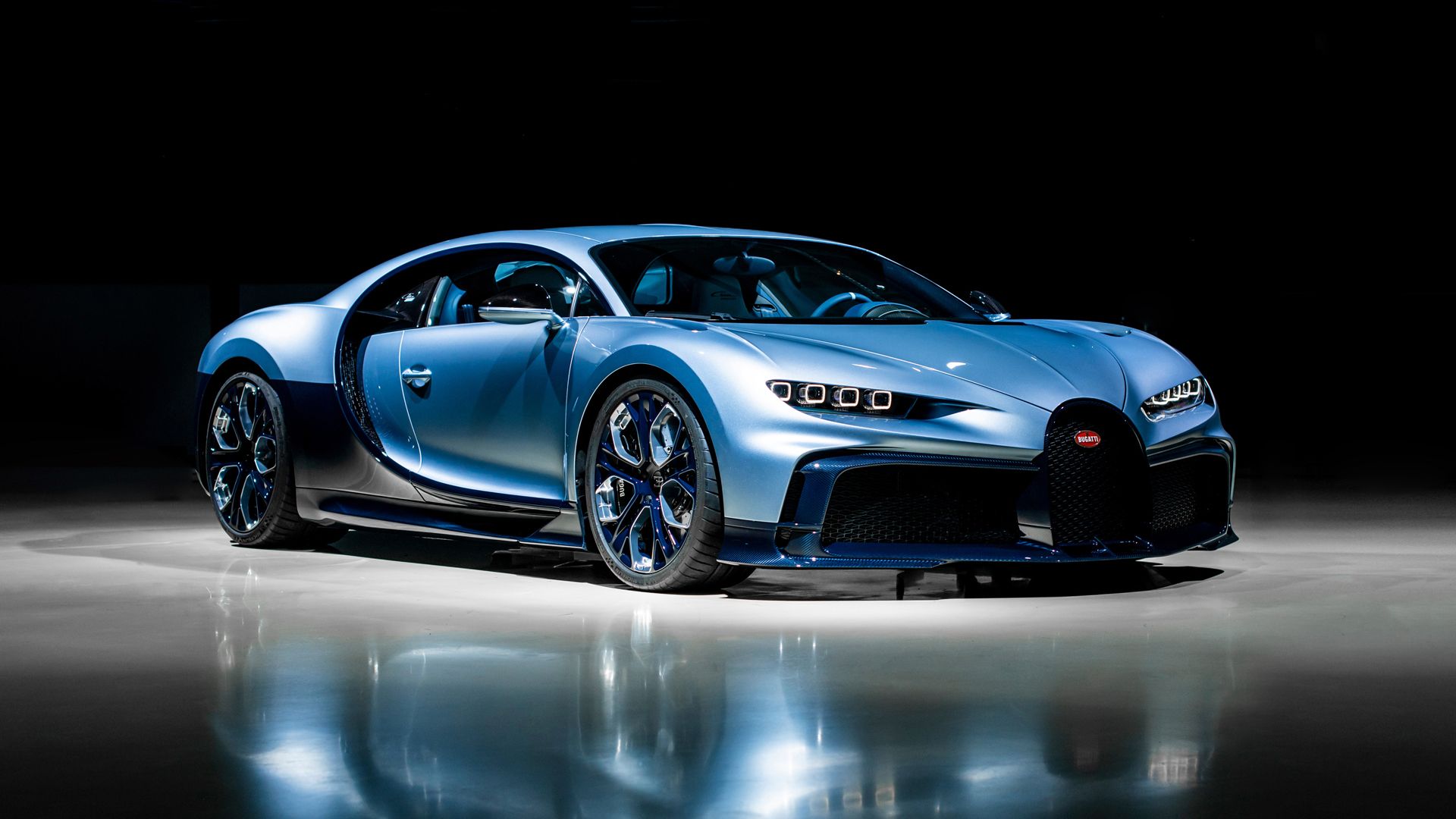
Bugatti's W-16 Is Dead, But It Just Set A World Record
The Bugatti Chiron Profilee, the last of the W-16 engines, just set a record for the most expensive new car sold at auctionElectrification Gives The 16-Cylinder Engine A New Lease Of Life
Let's face it: we live in an era when automakers can no longer make cars like the Chiron that get 9 MPG. In early 2020, former Bugatti CEO Stephan Winkelmann tried to hype the W-16's future, saying the quad-turbocharged mill would stick around for many years. However, the compact W-16 is facing the chopping block, soon to be replaced by the longer V-16.
Bugatti May Reveal The New V-16 Engine In June 2024
Bugatti's introduction of its V-16 was very short - it lacked technical information and gave few clues about Bugatti's upcoming creation. However, the press release said that the new car would be an evolution of the current Bugatti lineup. The automaker also gave a tentative premiere date for the Mistral's successor: June 2024. Despite the limited information about the powertrain, we expect it to feature hybrid technology.


